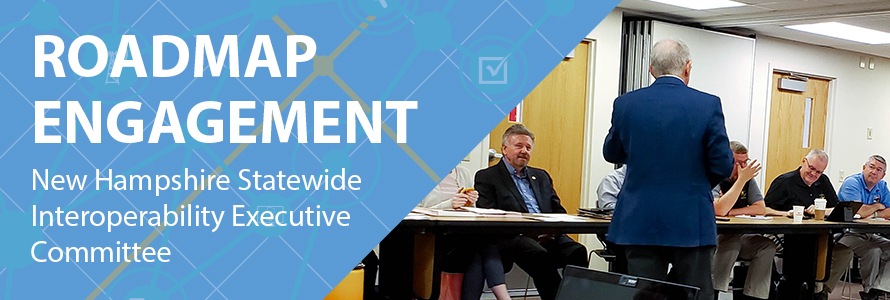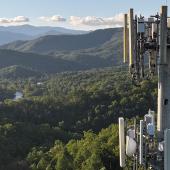The First Responder Network Authority’s (FirstNet Authority) mission is powered by our commitment to creating a network that meets public safety’s needs. That’s why we have conducted over 600 engagements involving over 15,000 public safety representatives so far in 2019, culminating in a nationwide Public Safety Summit in Phoenix, AZ, last month. At the Summit, over 100 representatives from all disciplines of public safety and FirstNet users joined together to discuss the FirstNet Authority Roadmap, a guide to chart the future of FirstNet.
The Summit provided comprehensive input from a variety of public safety interests ahead of the release of the Roadmap later this summer. We are not stopping there—we’re continuing to engage with first responders from around the country, in large forums like the Summit, and in focused groups that can address unique geographic or specific discipline needs.
Recently, the New Hampshire Statewide Interoperability Executive Committee (SIEC) hosted the FirstNet Authority for a focused engagement session. Approximately 20 representatives from public safety disciplines including the state departments of transportation, fire, law enforcement, wildlife, education, and technology met at the Richard M. Flynn Fire Academy in Concord. Also joining was AT&T, the FirstNet Authority’s contractor, to benefit from the feedback and discussions.
I was joined by my FirstNet Authority colleagues, Gary McCarraher, Mike Varney, and Amy Haukeness. Together we gave an overview of the Roadmap and the six domains identified as areas of focus for enhancement. Then the group drilled down on two domains for an in-depth discussion. For these two domains, the FirstNet Authority has articulated a vision.
- Situational awareness: Provide real-time access, collection, and distribution of threats, hazards, and conditions tailored to public safety operations
- User experience: Create an experience on the network driven by public safety operational needs that allows users to focus on their primary mission
In the sessions, the stakeholders provided valuable feedback with details specific to their geographic and discipline needs. They discussed what situational awareness means to their agencies, what is their most valued situational awareness data, how their agencies use broadband on a daily basis, and how the prioritized services of FirstNet impacts use of the network.
The group also discussed push-to-talk capabilities. Today some agencies are leveraging FirstNet to use LTE devices with commercial Push-to-Talk capabilities to augment land mobile radios (LMR) and expand coverage areas. Mission Critical Push to Talk (MCPTT) technical standards continue to evolve, and the vendor community is building technologies based on these standards—all with the goal of improving PTT to meet public safety’s needs.
John T. Stevens, New Hampshire Statewide Interoperability Coordinator and FirstNet Single Point of Contact, said, “When we have LTE mission-critical push-to-talk with FirstNet, it will be a significant advantage to public safety push-to-talk communications.”
Thank you to the New Hampshire SIEC for hosting the FirstNet Authority for a valuable engagement session. We look forward to our next session. New Hampshire is hosting a statewide public safety stakeholder Roadmap engagement on September 10 and is sponsoring a FEMA Region 1 public safety Roadmap engagement on September 11.




















